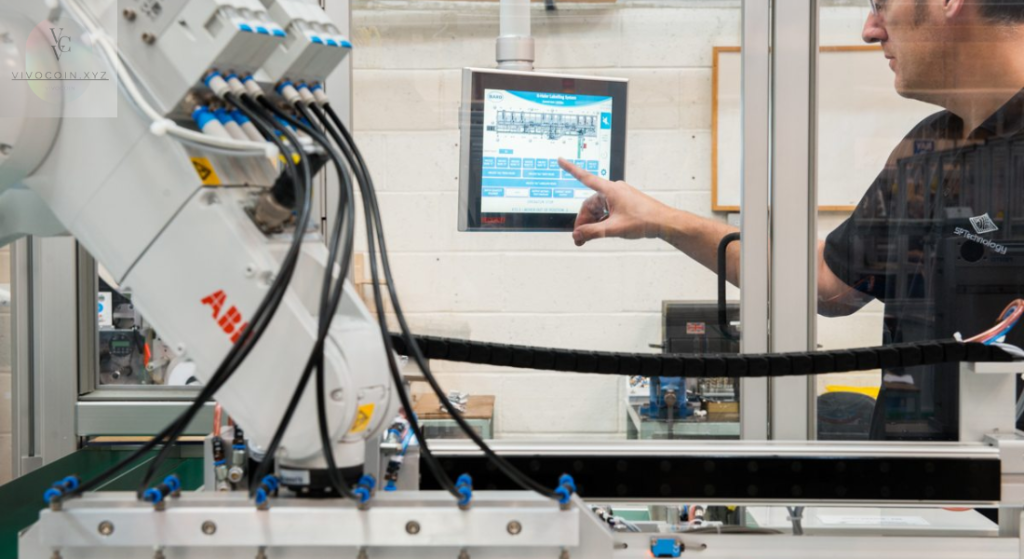Blog
High Tech Maintenance and Inspection Systems Revolutionizing Industrial Efficiency
Industries are increasingly turning to high tech maintenance and inspection systems to improve operations, reduce downtime, and enhance safety. These advanced systems leverage cutting-edge technologies to deliver precision, efficiency, and real-time insights. Explore how these innovations are transforming industries and setting new benchmarks for operational excellence.
The Evolution of Maintenance and Inspection
A Shift Toward Predictive Solutions
Traditional maintenance relied on reactive approaches, addressing issues only after they occurred. High tech maintenance and inspection systems use predictive analytics, identifying potential problems before they escalate. This proactive approach saves time and resources while ensuring uninterrupted operations.
Integration of Smart Technologies
Smart sensors, Internet of Things (IoT) devices, and artificial intelligence (AI) have revolutionized the way maintenance and inspections are conducted. These technologies provide real-time data, enabling precise monitoring and faster decision-making.
Increased Focus on Safety and Compliance
Industries such as aviation, manufacturing, and energy demand stringent safety standards. Advanced systems enhance compliance by conducting thorough inspections and generating detailed reports, minimizing the risk of human error.
Key Features of High Tech Maintenance and Inspection Systems
Real-Time Monitoring and Data Collection
Modern systems continuously monitor equipment and infrastructure, collecting valuable data on performance, wear, and potential issues. This data provides actionable insights that help optimize maintenance schedules and improve reliability.
Predictive Maintenance Capabilities
By analyzing data trends, these systems predict equipment failures before they occur. Predictive maintenance reduces downtime, extends the lifespan of assets, and minimizes costly emergency repairs.
Remote Access and Control
High tech systems often come with remote access capabilities, allowing teams to monitor and control operations from anywhere. This feature is particularly useful for industries with geographically dispersed assets, such as oil and gas or transportation.
Automated Inspection Processes
Automation streamlines inspection procedures, eliminating manual tasks and improving accuracy. Automated drones, robots, and smart devices can access hard-to-reach areas, enhancing efficiency and safety.

Benefits of High Tech Maintenance and Inspection Systems
Reduced Downtime
Proactive monitoring and predictive analytics prevent unexpected equipment failures, ensuring uninterrupted operations. Reduced downtime leads to higher productivity and profitability.
Enhanced Equipment Longevity
Regular monitoring and maintenance keep machinery in optimal condition. High tech systems identify issues early, preventing wear and tear and extending the life of expensive assets.
Improved Safety Standards
Automated inspections reduce the need for manual interventions in hazardous environments. These systems enhance workplace safety by identifying potential risks and ensuring compliance with safety regulations.
Cost Savings
By minimizing unplanned repairs and optimizing resource allocation, these systems reduce operational costs. Their efficiency translates to significant savings over time.
Streamlined Operations
Real-time insights and automated processes improve operational efficiency. Teams can focus on strategic tasks instead of manual inspections, boosting overall productivity.
Applications of High Tech Maintenance and Inspection Systems
Manufacturing and Production
Factories use these systems to monitor machinery, detect faults, and ensure smooth production lines. Automated inspections help maintain quality control while reducing production delays.
Energy and Utilities
In the energy sector, advanced systems monitor pipelines, turbines, and power grids. They detect leaks, assess infrastructure integrity, and optimize energy production, ensuring reliability and safety.
Transportation and Aviation
Transportation industries rely on high tech systems to inspect vehicles, aircraft, and railways. These systems enhance safety, reduce delays, and improve asset management.
Infrastructure and Construction
Inspection systems assess the structural health of buildings, bridges, and tunnels. They detect cracks, corrosion, and other vulnerabilities, ensuring compliance with safety standards and extending the lifespan of critical infrastructure.
Oil and Gas
Oil rigs, pipelines, and refineries benefit from advanced inspection technologies that monitor operations in real time. These systems reduce environmental risks and improve efficiency in harsh conditions.
Technologies Powering High Tech Maintenance and Inspection Systems
Artificial Intelligence and Machine Learning
AI and machine learning analyze vast amounts of data to detect patterns and predict failures. These technologies improve decision-making and enhance the accuracy of inspections.
IoT Sensors and Connectivity
IoT sensors collect real-time data from machinery and infrastructure, providing continuous monitoring. Connectivity ensures seamless communication between devices, enabling integrated operations.
Drones and Robotics
Drones and robotic systems access hard-to-reach areas, conducting inspections with precision. They are ideal for inspecting tall structures, underwater pipelines, and hazardous environments.
Augmented Reality (AR)
AR enhances inspections by overlaying digital information onto physical environments. Technicians can visualize data, identify components, and perform tasks more efficiently using AR headsets.
Cloud-Based Platforms
Cloud technology enables remote access to data and analytics, facilitating collaboration across teams. Cloud-based systems also provide secure storage for inspection records and maintenance schedules.
Choosing the Right High Tech System for Your Industry
Define Your Objectives
Identify your organization’s specific needs, such as reducing downtime, improving safety, or streamlining processes. Understanding your goals helps you choose a system that aligns with your priorities.
Evaluate Technology Compatibility
Ensure the system integrates seamlessly with your existing infrastructure. Compatibility with IoT devices, AI platforms, and other technologies is crucial for smooth implementation.
Prioritize User-Friendly Interfaces
Adopt systems with intuitive interfaces that require minimal training. User-friendly platforms enhance adoption rates and reduce the learning curve for your team.
Consider Scalability
Choose a system that can scale with your organization’s growth. Scalable solutions accommodate expanding operations and evolving technological requirements.
Maintenance Tips for High Tech Systems
Regular Software Updates
Keep your system up to date with the latest software releases. Updates enhance functionality, fix bugs, and ensure compatibility with new technologies.
Perform Routine Inspections
Even automated systems require periodic checks. Regularly inspect sensors, drones, and other components to maintain performance and accuracy.
Train Your Team
Provide comprehensive training for employees who use the system. Proper training ensures efficient operation and maximizes the system’s benefits.
Back Up Data Securely
Store data in secure locations, such as encrypted cloud platforms. Regular backups prevent data loss and ensure continuity in case of technical issues.
The Future of High Tech Maintenance and Inspection Systems
Integration with AI-Driven Decision-Making
AI will play an even greater role in maintenance and inspection systems. Future advancements will enable real-time decision-making, optimizing operations and reducing human intervention.
Widespread Adoption of Autonomous Systems
The use of autonomous drones and robots will become more prevalent. These systems will perform complex inspections with minimal human oversight, improving safety and efficiency.
Focus on Sustainability
Sustainable practices will drive innovation in high tech systems. Energy-efficient technologies and eco-friendly materials will support industries’ efforts to reduce their environmental impact.
Why High Tech Systems Are a Worthy Investment
Competitive Advantage
Organizations that adopt advanced systems gain a competitive edge by improving efficiency, reducing costs, and delivering superior results.
Adaptability to Industry Trends
High tech maintenance and inspection systems align with industry trends toward automation, sustainability, and data-driven operations.
Long-Term Value
While the initial investment may be significant, the long-term benefits—reduced downtime, enhanced safety, and cost savings—make these systems a smart choice for forward-thinking organizations.
Embrace the Future with High Tech Maintenance and Inspection Systems
High tech maintenance and inspection systems are more than just tools—they’re transformative solutions that drive innovation, efficiency, and safety. By adopting these systems, industries can optimize operations, reduce risks, and pave the way for a more sustainable future. Invest in advanced systems today and revolutionize the way you maintain and inspect critical assets.

